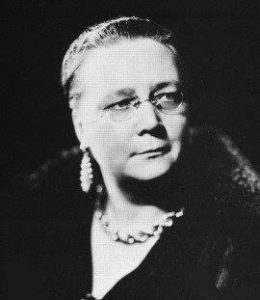Dorothy L. Sayers’s Whose Body? is a 1923 mystery novel that introduces the author’s most well-known character, the amateur detective Lord Peter Wimsey. When the naked body of a deceased man wearing only spectacles is found in a bathtub, Lord Peter investigates to find the criminal responsible and to discover the identity of the victim. In this whodunit and “dun-to-whom” novel, human motives are called into question as the mystery unfolds.
“I love trifling circumstances,” said Lord Peter, with childish delight; “so many men have been hanged by trifling circumstances.”
The storytelling in Whose Body? is dominated by the use of dialogue. It is colored with dialect, which can be difficult to understand, inhibiting the reader’s understanding of the story at times. Fortunately, this writing style makes the novel a quicker read and allows for the personalities of the characters to shine through easily. It also services the novel’s approach to mystery-unraveling: Whose Body? follows the statements and actions of the characters, which in turn reveal information pertinent to the case. Scientific prowess and police procedurals are significantly less emphasized, though crime scene analysis still occurs often.
The novel’s use of humor keeps the reader reeled into the story, particularly through the remarks of Lord Peter Wimsey. It also adds color to what could have been a notably more dull story. The characters of Whose Body? are the most interesting and promising aspects of the novel, and the humor in the story highlights this strength further.
The charming protagonist Lord Peter Wimsey is introduced as the archetypal gentleman detective, but he also possesses a layer to his character not commonly seen in many past detectives. Revealed to have been a former officer in World War I, Wimsey became a detective for amusement and as a distraction from the horrors of the war. Unlike many detectives in the mystery genre, he does not always remain effortlessly detached from the mysteries he follows. Though not quite an armchair detective, Wimsey feels far more comfortable solving crimes by simply reading about them as opposed to hunting and convicting criminals in person. He expresses his worry for people getting hurt in the midst of criminals attempting to escape justice – he is not only concerned about the lives of innocents but even the potentially guilty. This empathetic aspect of his character allows for readers to connect to Lord Peter, as the readers can identify with his preference to explore a good mystery from a distance, thus avoiding having to witness the possible consequential horrors of crime.
The novel has a few other charming characters: Mervyn Bunter, Lord Peter’s competent valet; Mr. Thipps, a nervous man who discovers the dead body in his bathtub; and Sir Reuben Levy, the suspected victim whose mysterious being is explored in a fascinating analysis of his habits through those who knew him. Perhaps to be expected from Lord Peter Wimsey’s introductory novel, Whose Body? does not present the most thorough exploration of its characters. Still, it will likely leave readers curious to follow the amateur sleuth (and his wonderful butler) in more adventures.
The premise of this novel is gripping but is done only so much justice by the novel’s exploration of the case. The analyses of the routine behavior of supposed victim Sir Reuben Levy are the most captivating parts of the story, followed by some memorable humorous moments. The novel’s culprit reveal is also highly interesting, however one may find who the criminal is to be predictable. The biggest disappointment in Whose Body? is the exploration of the suspects. While half of them are at least somewhat interesting, they don’t stand out as strongly as the protagonists, and there is hardly a challenge provided to figure out the criminal. Readers who particularly enjoy the story and unraveling of a mystery in detective fiction may not finish this novel feeling greatly satisfied.

Overall, Whose Body? is a very enjoyable and smart read. Despite its flaws, it is likely to immerse readers where it does succeed and with its warm charm. It is a solid introductory novel for Lord Peter Wimsey, as well as a nice first read for anyone looking to dive into detective fiction.
About the Author
During her life, Dorothy L. Sayers had published a total of 14 novels and collections of short stories following Lord Peter Wimsey. In addition to being a renowned author, Dorothy was also a poet and translator. She took the most pride in her translation of Dante’s The Divine Comedy, even more than she did in her popular Wimsey series. Sayers’s mystery writing allowed her to rise to the position of president of the Detection Club. Beyond the aforementioned works, Sayers also wrote four additional collaborative novels and two serial stories for broadcasting.
References
“About Dorothy L Sayers.” Sayers.org. The Dorothy L. Sayers Society, n.d. https://www.sayers.org.uk/biography/. Web. 22 Sep. 2017.
“Dorothy L. Sayers.” Goodreads.com. Goodreads Inc, n.d. https://www.goodreads.com/author/show/8734.Dorothy_L_Sayers. Web. 21 Sep. 2017.
“Whose Body? (Lord Peter Wimsey #1).” Goodreads.com. Goodreads Inc, n.d. https://www.goodreads.com/book/show/192893.Whose_Body_. Web. 21 Sep. 2017.


